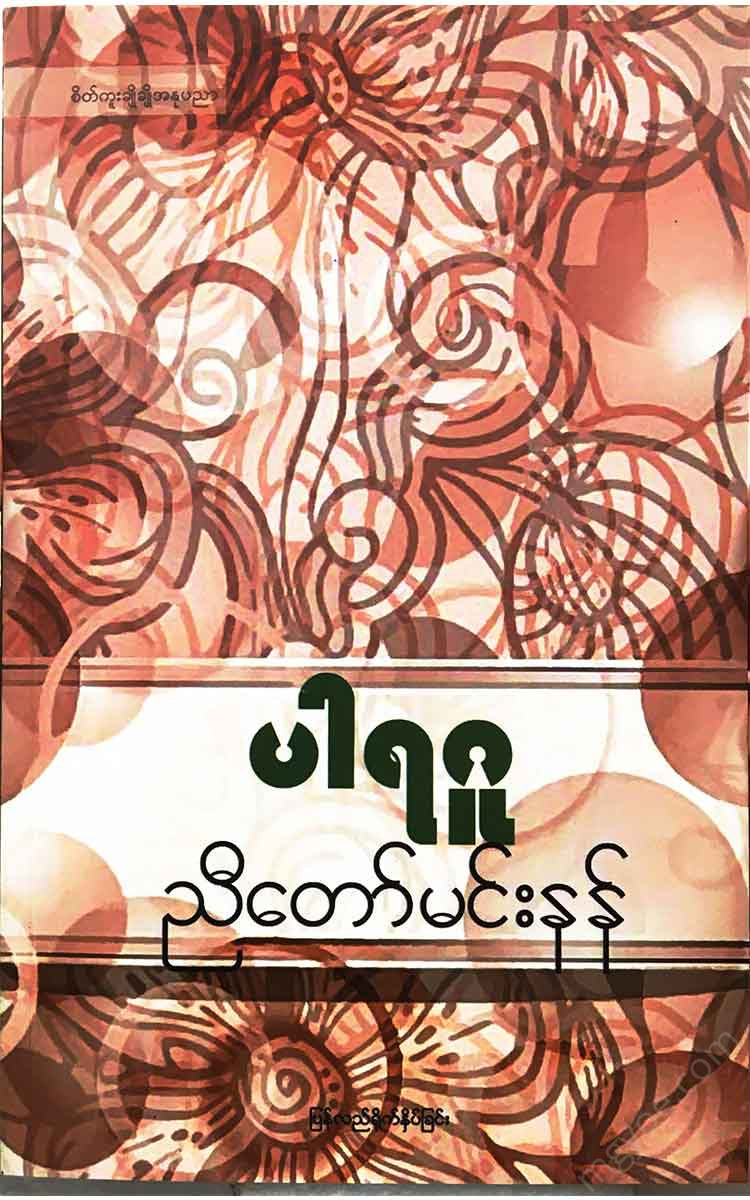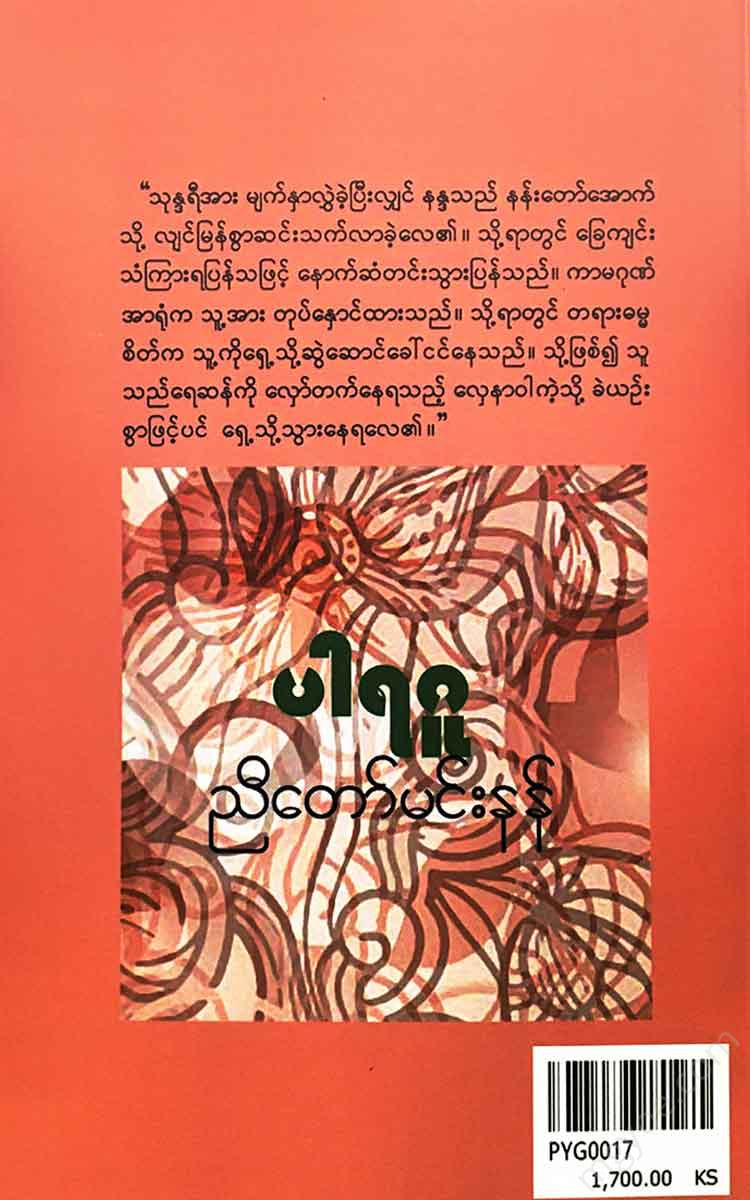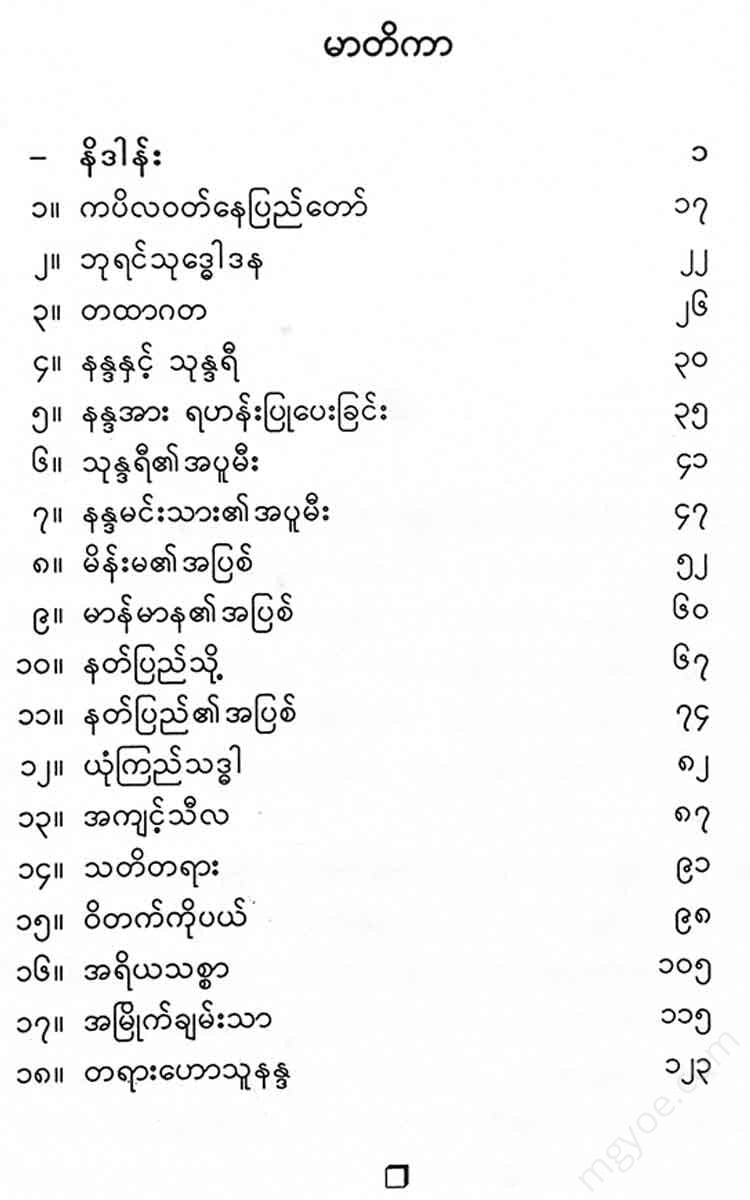စိတ်ကူးချိုချိုစာပေ
Expert - Brother Min Nan
Expert - Brother Min Nan
Couldn't load pickup availability
Introduction
The book Sundarananda (Beautiful Nanda) or Nyi Daw Min Nan, which is in the hands of readers, is a Burmese prose translation of the Sanskrit poem `Saudarananda' by the poet or Buddhist commentator Ashgabatsa. The main character of this poem is Nanda, the younger brother of the Buddha.
Siddhartha and Nanda were brothers, but their natures were as different as the north and the south from their childhood. Siddhartha, from his childhood, was weary of the world and yearned to seek the truth. He renounced the throne and worked tirelessly to become a Buddha. Nanda was not like that. His attachment to worldly interests was his nature.
The Buddha rescued Nanda, who was drowning in the mire of sensual pleasures. The poet Assa Ghosa has composed a beautiful poem about this in his "Sundarananda".
About Nanda
If I were to briefly describe the story of Nanda in 'Sundara Nanda'...
Sundari was the consort of Nanda. Nanda was the brother of the Buddha. Nanda and Sundari loved each other very much. One day the Buddha took Nanda to the monastery and ordained him a monk.
Just as Sundari was burning with grief because her lover Nanda had not returned, so Nanda was also suffering from separation from her lover Sundari. He could not sleep, could not eat, and was in a state of despair. The monks taught Nanda the Dhamma. But it was in vain.
Then the Buddha took Nanda to the top of the Himalayas. He showed him a blind monkey on the top of the Himalayas and asked Nanda, “Nanda, who is more beautiful, this blind monkey or your beloved wife, Sundari?” Nanda smiled and replied, “This blind monkey is incomparable to the Buddha’s wife.”
Then the Buddha took Nanda back to the celestial realm, the celestial realm, through the Himalayas. When the celestial realm saw the celestial maidens, the Buddha told Nanda
He asked about the difference between the goddesses and the beauties. Then Nanda replied, “Just as the blind monkey and the Buddha’s daughter-in-law are not comparable, the Buddha’s daughter-in-law is not comparable to these goddesses.”
Nanda forgot about Sundari and became obsessed with the goddesses. He had a strong desire to have the company of the goddesses. Then the Buddha told Nanda that the way to obtain these goddesses was to practice the Dhamma.
Nanda practiced the Dhamma with the desire to obtain the divine maidens. Then Ananda explained to Nanda that the divine realm is impermanent, temporary, and that when one's karma and merit are exhausted, one will return to the heavenly realm. Nanda understood. After hearing the Buddha's teachings and practicing the Dhamma, Nanda became an arahant.
Different
The content of Nanda is included in the Udāna, the Jataka, and the Dhammapada Atthakatha. However, the content of Nanda as mentioned in this Sundarānanda is not mentioned here.
There is a slight difference between the content and the content of Nanda in Pali literature.
The Sundarananda poem is a collection of poems that depicts the battle between Dharma and love. In Nanda's heart, sensual pleasures and Dharma are in a battle. In the end, Dharma wins.
"Just as Sundarananda succeeds in depicting the love and affection between the lovers Nanda and Sundari, he also succeeds in depicting the teachings of the Buddha in beautiful words."
Poetry ability
Poetry is the most effective and important tool for appealing to the human heart. Therefore, in order to penetrate the difficult and profound Abhidhamma and Dhamma concepts into the hearts of ordinary people, some scholars have used poetry in the past. They still use it today. They will continue to use it in the future.
The author of this poem "Sundara Nanda" was Ashaghosa, a famous Buddhist Abhidhamma teacher. However, he did not abandon the art of poetry. At the end of the poem "Sundara Nanda", Ashaghosa explains the value of poetry as follows.
“This book, full of discourses on the Dhamma of Liberation, is for peace. It is not for joy. It is written in poetic form to attract readers. Apart from the Dhamma of Liberation, what I have included in this book is for the sake of poetry. It is like adding sweetness to bitter medicine so that it can be drunk.”
Sundara Nanda
“Sundara Nanda” is a collection of poems consisting of 18 chapters. This collection of poems contains Buddhist teachings in vivid words. This collection of poems is
It is said to be a poem composed primarily of Theravada ideas. However, it also incorporates Mahayana ideas.
The first mention of Sundarananda's poetry was in the Sakyapithaka of the King of Nepal. In that Sakyapithaka, two ancient manuscripts of Sundarananda's poetry were found.
Both these principles are not pure principles. Based on these principles, Pandit Praprasad Shastri edited and refined Sundarananda and published it in 1910. After that, many scholars from Europe revised and refined Sundarananda's poetry. In 1928, based on the original and refined principles, Dr. Johnston published a book entitled Sundarananda's Poetry.
Sundarananda fully contains the characteristics of poetry, such as singararasa, thantarasa, etc. If we were to extract and describe some of the poetic groups included in Sundarananda in this introduction,...
Introductory poem
The Buddha came to Nanda's palace to receive alms. But no one offered him alms, so he turned back. When Nanda heard about this, he became sad and, not trusting Sundari, followed the Buddha. The painting is depicted in Sundara Nanda as follows.
“The spirit of reverence for the Buddha drew Nanda’s son forward. But the spirit of his wife pulled him back. He was uncertain, so he neither moved forward nor stopped. Just as King Hintha, riding on a wave, neither moved forward nor stopped, so was Nanda’s condition.”
The waves push the swan back while it is swimming. The swan, however, moves forward. At that time, the swan does not move forward, nor does it stay in one place. He gives an example of the swan and Nanda. It is a very beautiful example and gives a glimpse of Nanda's state of mind. The poet Kalidasa imitates this example and uses it in three verses in his Kumarasambava.
The poet Ashtaghosa expresses this meaning with another beautiful example...
“Having turned his face away from Sundari, Nanda quickly descended to the palace. But when he heard the sound of footsteps again, his hair stood on end. The sense of sensual pleasures held him captive. But the mind of Dhamma drew him forward. So he moved forward with difficulty, like a boat rowing through the water.”
Nanda loved Sundari very much. Sundari could not separate from Nanda. The poet describes the love and affection between the two of them thus...
"If Nanda were to become a Sakkava bird, his wife Sundari would not become a Sakkava bird. The two husbands and wives would be inseparable. If Nanda were to be separated from Sundari, and Sundari were to be separated from Nanda, then they would be like the night separated from the moon, and the moon separated from the night."
"There is no beauty."
In Sundarananda's poem, the Buddha's Abhidhamma and Dhamma are expressed in words that are both beautiful and easy to understand. The story of Nibbana is explained in this way.
“A lamp that has been extinguished does not remain on earth. It does not reach heaven. It does not reach any direction. The oil has run out, and that is the only thing that has become peaceful. Similarly, a person who has attained Nibbana does not remain on earth. It does not reach heaven. The oil of defilements has run out, and that is the only thing that has become peaceful.”
The concept of Nibbana is explained in a simple way using the analogy of a lamp. Some people mistakenly think that Nibbana exists in some other world, a pleasant place after death. In fact, this is not the case. It is achieved in this world by eliminating defilements. It is achieved by attaining peace.
The poet seems to have taken the analogy of Nibbana and a lamp from the Pali Pitaka. In the Sulahattapadopama Sutta of the Mizzima Nikaya, the Samyatta Vibhaanga Sutta of the Mizzima Nikaya, and the Aggivacsagatta Sutta of the Samyutta Nikaya, the Buddha gives instructions and gives an example of Nibbana and a lamp.
Nanda became a monk, but his attachment to his wife was causing him trouble. He was not happy in his monkhood. He was only focused on his beloved wife. Then a monk named Mettaya explained to Nanda the meaning of immortality. The poet describes the impermanence of the body in this way.
“Do you think yourself strong? I think this body is even more worthless than a pot. Why, if a pot is properly maintained, it will last a long time. But the body, even if properly maintained, will not last long. It will decay.” “Looking at your youthful age, is your mind not longing for sensual pleasures? Restrain that mind, which is like a torrent that never returns.







